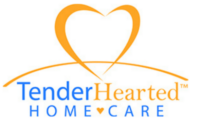Signs of a Stroke
Elderly Care in Cleveland, NC
Stop. Look at the clock. Watch the second hand tick 40 seconds.
Someone in America is having a stroke right now. In fact, every year there are 795,000 Americans who suffer a stroke, which means a stroke is occurring every 40 seconds and ending in fatality every 4 minutes, with 40% of those fatalities being men, 60% women.
Every 4 minutes. Think about it. Time how long it takes you to read this short article. How many more victims does that make from this devastating illness?
During the month of May, the American Heart Association and the American Stroke Association have joined together to end stroke by teaching everyone how to be a superhero in the fight. They are accomplishing this by bringing awareness to the disease, making the symptoms of a pending stroke clear, and educating as many people as they can on ways to prevent strokes and save thousands of lives.
Here are some tips on how you can become a stroke hero–the life you might save could be yours.
Facts About Strokes
In the United States alone, stroke is 5th on the list of top causes of death, and 1st in the causes of disability. Yet many people do not know the basic facts about what a stroke is, what the risk factors are, and many more pieces of important information. Read on for some of these facts, or click here to find printable information sheets on not only the alarming statistics on this debilitating disease but also lifestyle changes to prevent it, how to cope with life after having a stroke, and more.
• What is a Stroke?: Our vessels bring blood and oxygen to the brain–a vital part of what keeps our brain functioning smoothly. When a stroke occurs, that flow of life-giving blood and oxygen is interrupted because of a blockage or a rupture.
• What Happens?: With no oxygen or blood to the brain, blood cells begin rapidly dying (at a rate of 2 million cells per minute that a stroke is left untreated).
• What is a TIA?: Also known as a ‘mini-stroke’, TIA’s are a temporary blockage of the vessels. THESE ARE JUST AS SERIOUS AS A STROKE and can act as a warning sign, so if you or a loved one experience brief episodes of the symptoms of a stroke, it is critical that you see a doctor immediately.
• What are the risk factors?: Check with your physician if you are unsure of your risk of stroke, or educate yourself on the most common risk factors. Here are some to consider:
# Within Your Control to Change or Treat: uncontrolled high blood pressure; smoking or tobacco use; having diabetes or high cholesterol; obesity; excessive use of alcohol and illegal drugs
# Out of Your Control: your age, gender, heredity, race, and if you have had a prior stroke.
F.A.S.T. Ways to Spot a Stroke–and Call 9-1-1!
To make it easier to spot the most alarming signs of a stroke, memorize this acronym and educate your loved ones on how they too can save a life.
Face Drooping: If one side of the person’s face is numbed or has drooped suddenly and they are unable to smile evenly or voluntarily move their facial muscles…
Arm Weakness: If one arm is weak or numb and you ask the person to lift both arms, only to find that they either are unable to move or one arm drifts downward involuntarily…
Speech Difficulty: If the person’s speech is slurred or unintelligible, or if they are unable to speak at all, and cannot repeat a simple sentence like “The house is painted blue.”…
Time to Call 9-1-1: Don’t hesitate or wait for someone else to make the decision–if you or someone you love is experiencing these symptoms, call for help now and get them to the closest medical facility or emergency department immediately.
Remember: while the effects of a stroke can be devastating, the truth is that it can be prevented, treated and beaten, if we all work together.
If you or an aging loved one are considering elderly care in Cleveland, NC, contact the caring professionals at TenderHearted Home Care today. Call us at (704) 612-4132
- 5 Things That Help Seniors Sleep Better - April 18, 2024
- It’s Okay to Think About Your Needs and Not Just an Aging Parent’s, and In-Home Care Helps You Do That Without Guilt - April 4, 2024
- Volunteering Tips for Seniors - March 22, 2024


